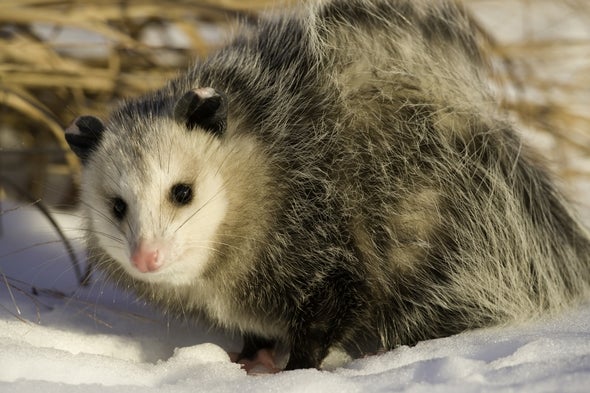
Xplor reconnects kids to nature and helps them find adventure in their own backyard. Free to residents of Missouri.


































Stay in Touch with MDC news, newsletters, events, and manage your subscription

Xplor reconnects kids to nature and helps them find adventure in their own backyard. Free to residents of Missouri.

A monthly publication about conservation in Missouri. Started in 1938, the printed magazine is free to residents of Missouri.


CAPE GIRARDEAU, Mo. – There’s no need to rescue wildlife, even in winter, according to Missouri Department of Conservation (MDC) naturalists. Though winter is a challenging season for wildlife, each species has their own method of surviving the cold. Some of them migrate, some hibernate, and others simply den up and stay warm.
According to Jordi Raos, a naturalist at the Cape Girardeau Conservation Nature Center, woodchucks, or groundhogs, are considered true hibernators. In late summer, they fatten up to prepare for a deep sleep that usually lasts until winter is over. They conserve energy reserves while sleeping by lowering their body temperature by about half and their heartbeat down to about four to five beats per minute from the normal 160 beats per minute.
“Other true hibernators include Franklin’s ground squirrels, meadow jumping mice and some species of bats,” Raos said.
Though bears are widely thought of as hibernators, they aren’t true hibernators. A bear’s sleep is not as deep as a groundhog’s. They fatten themselves before winter and their heart rate drops, but their body temperature doesn’t go down much.
“This is probably because black bear females are usually pregnant when they sleep, and the babies growing inside them need warmth,” Raos explained. “Bears can even nurse in their winter dens.”
Frogs, snakes and turtles don’t hibernate, but they go into what’s called torpor, or a dormant state that closely resembles death. Green frogs spend winter in the mud at the bottom of ponds and box turtles bury themselves in soft ground. Snakes find shelter in a den or crevice and may spend the winter in a tangle of other snakes–sometimes not all the same species. Some frogs, including Missouri’s Wood Frog, deal with lower temperatures by becoming slightly frozen. The livers of these frogs secrete a sugary substance that allows them to freeze without dying for up to a few weeks.
Skunks, raccoons and opossums don’t hibernate, but will nap in dens, trees, or logs during the coldest parts of winter. Their naps might last weeks, but when the weather turns balmy, they venture outdoors. These nocturnal animals may also switch to searching for food during the day to avoid colder night temperatures.
“This is a great time to take a hike or go out in your yard to look for tracks, scat and chew marks to see who’s been out and about,” Raos said.
She suggests taking photos of tracks and scat with something else in the photo for a size comparison. Then the photos can be used to compare to a guide book or MDC’s online field guide for identification of who left the tracks. MDC’s online field guide can be found at www.mdc.mo.gov.